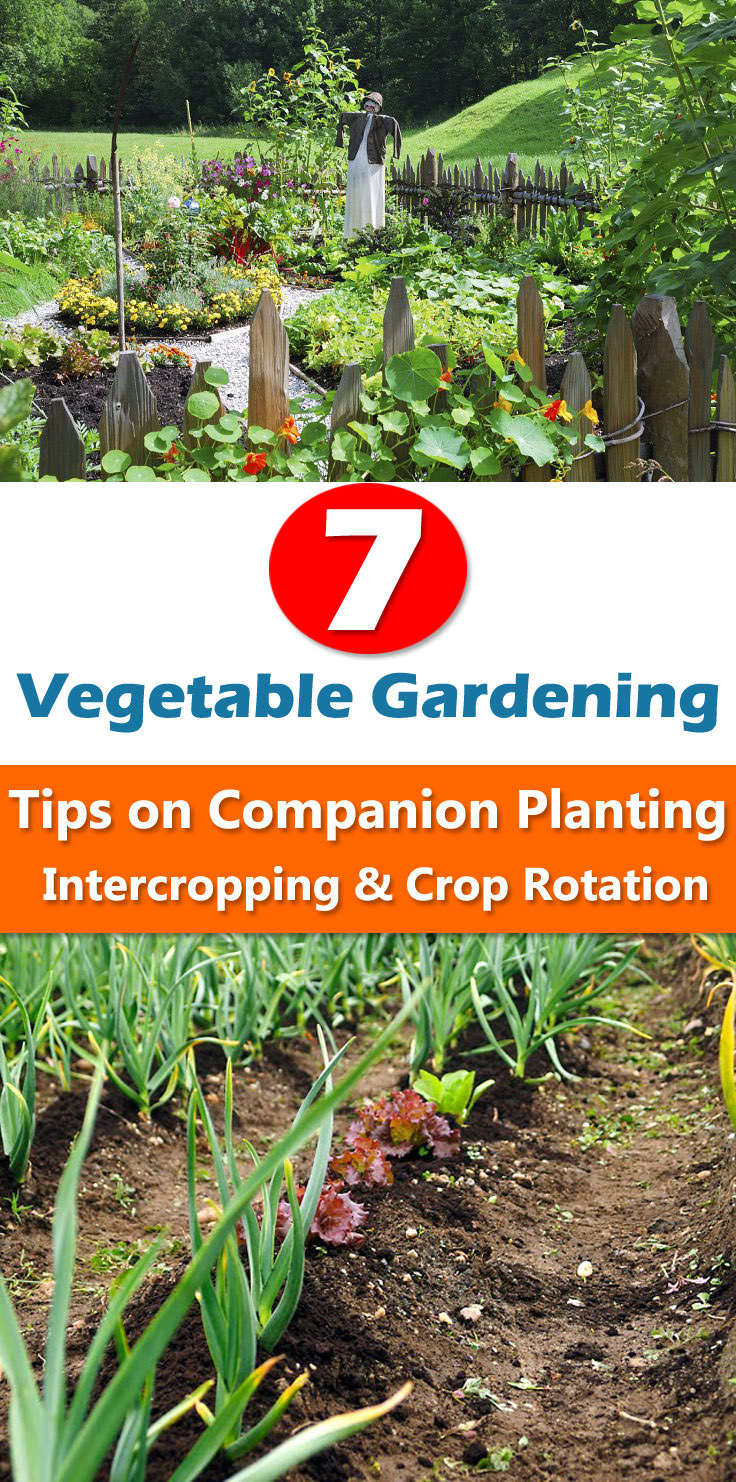These 7 intelligent vegetable gardening tips on companion planting, intercropping and crop rotation will improve the productivity of your garden.
1) Do Crop Rotation: Avoid planting the plants of the same family at similar site each year
It is a good practice, avoid planting the plants of the same family at the same site continuously. Usually, the plants from similar family have common pest and disease problems, they also draw the same nutrition from the soil again and again. A useful and informative article on this issue that you must read for more information is available on the Harvest to Table.
2) Consider the Depth of Roots: Grow shallow root plants with deep root plants
Combine vegetables that have different root development. Those with shallow roots (lettuces) are best planted with those that root deeply (tomatoes). It allows them to “catch” the nutrients at different depths and this will prevent their competition for nutrients at the root zone.
3) Interplanting: Plant fast-growing species with slow-growing species
Cultivate the fast-growing smaller crop at the same time with the large vegetable plants that take time. This will give all the space and time to both the species to develop well until harvest without damaging the other. For example, you can grow radishes with carrots, radishes mature early and harvested first, thus making more space for carrots to grow.
4) Grow legumes: Planting legumes fix the nitrogen in the soil
Although there are vegetables that poorly tolerate their presence, it is always advisable to grow legumes in crop rotation. The reason is obvious: the plants (peas, beans, clover etc.) belong to this family have the ability to fix nitrogen. Thanks to the action of nitrogen-fixing bacteria that live in symbiosis with their roots.
5) Companion planting: Grow pest repellent plants
Plants from allium family such as garlic, leek, and onion. Herbs like lavender, oregano, lemon balm, holy basil and flowers like nasturtiums and marigold are great pest repellents. These plants can be tucked here and there in your vegetable garden bed to deter some harmful insects and pests. For example, if nematodes are the problem in your soil, plant marigolds. Marigold roots consist thiophene that repels nematodes. Vegetables like potatoes and tomatoes usually suffer from them, in such a case you can plant marigold at the same site for a couple of months before planting these crops. For more information about marigold and its repellent properties, read this educative article at the University of Florida.
6) Avoid plants that have high nutritional requirements: Don’t grow vegetables together that require a higher amount of nutrition
Avoid the cultivation of plants that require a high consumption of nutrients (especially nitrogen) together. Grow them with plants that are less demanding and have low nutritional requirements. However, there is an exception to this rule, plants that have the same nutrition and watering needs must be grown together.
7) The disparity in size: Maintain balance in the size of the plants
Another element to be considered in the choice is the size of the vegetables you’re growing together. Plants that grow much in volume or in height (as in the case of cucumber, vertically) can shade smaller plants and disturb their growth. Conversely, this disparity in size can be best used if you grow such plants that thrive well in a little shade under tall, spreading plants.




Great and very helpful tips! I’ve been thinking about companion planting for a long time and finally decided to try. Your advises and ideas seem to work great for me. Thank you for sharing this great info! Happy gardening!